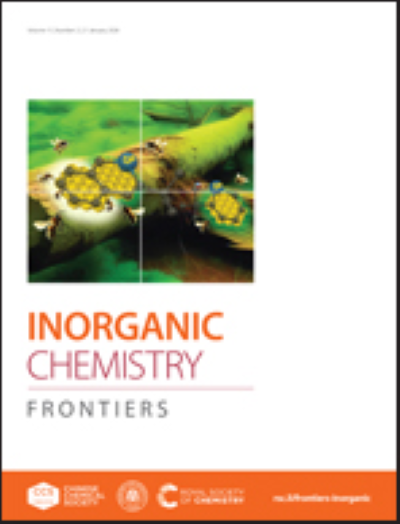软碳Carbon@Coal-Derived硬碳在sib中增强钠储存的孔隙结构调制与缺陷工程
IF 6.1
1区 化学
Q1 CHEMISTRY, INORGANIC & NUCLEAR
引用次数: 0
摘要
硬碳(HC)由于其成本低、来源丰富、可逆容量大、适用性强等优点,被认为是钠离子电池(sib)最有前途的商用负极材料。然而,HC存在初始库仑效率(ICE)低、速率性能差、循环时间长等问题,严重制约了其实际应用。在此基础上,我们对煤源HC的微晶结构进行了明确的调控,得到了表面缺陷的减少和层间间距的增加,并通过在多孔HC上涂上软碳(SC)进一步提高了煤源HC作为sib阳极材料的储钠能力。同时,我们创新地采用溶胶-凝胶法和SC涂层对煤的复杂成分进行化学交联反应,成功合成了高性能的SC@HC复合材料。SC@HC复合材料作为sib的阳极,在0.01 a /g下可提供320 mAh/g的可逆容量,高达89%的ICE,以及良好的循环稳定性(在1 a /g下循环400次后容量保持率为80%)。该工作可以合理指导低缺陷、孔隙封闭性更强的煤基HC材料的设计,为高性能sib负极材料的开发提供一条可行的途径。本文章由计算机程序翻译,如有差异,请以英文原文为准。
Pore Structure Modulation and Defect Engineering of Soft Carbon@Coal-Derived Hard Carbon for Enhanced Sodium Storage Application in SIBs
Hard carbon (HC) is regarded as the most promising commercial anode material for sodium-ion batteries (SIBs) due to its low cost, abundant sources, large reversible capacity, and suitability. Nevertheless, HC suffers from low initial coulombic efficiency (ICE), poor rate performance, and long-term cycling performance, significantly restricting its practical application. Herein, we proceed with defined regulation of the microcrystalline structure of coal-derived HC, which obtains the reduced surface defects and the increased interlayer spacing, further enhancing the sodium storage capacity of coal-derived HC as an anode material for SIBs by coating porous HC with soft carbon (SC). Meanwhile, we successfully synthesize high-performance SC@HC composite materials through chemical crosslinking reactions by innovatively adopting the sol-gel method and SC coating for the complex composition of coal. The SC@HC composite material as an anode in SIBs can deliver a reversible capacity of 320 mAh/g at 0.01 A/g, a high ICE of 89%, and good cycling stability (capacity retention of 80% after 400 cycles at 1 A/g). This work can rationally guide the design of low-defect and much more closed pores coal-derived HC materials and provide a feasible route for the development of high-performance HC-based anode materials for SIBs applications.
求助全文
通过发布文献求助,成功后即可免费获取论文全文。
去求助
来源期刊

Inorganic Chemistry Frontiers
CHEMISTRY, INORGANIC & NUCLEAR-
CiteScore
10.40
自引率
7.10%
发文量
587
审稿时长
1.2 months
期刊介绍:
The international, high quality journal for interdisciplinary research between inorganic chemistry and related subjects
 求助内容:
求助内容: 应助结果提醒方式:
应助结果提醒方式:


